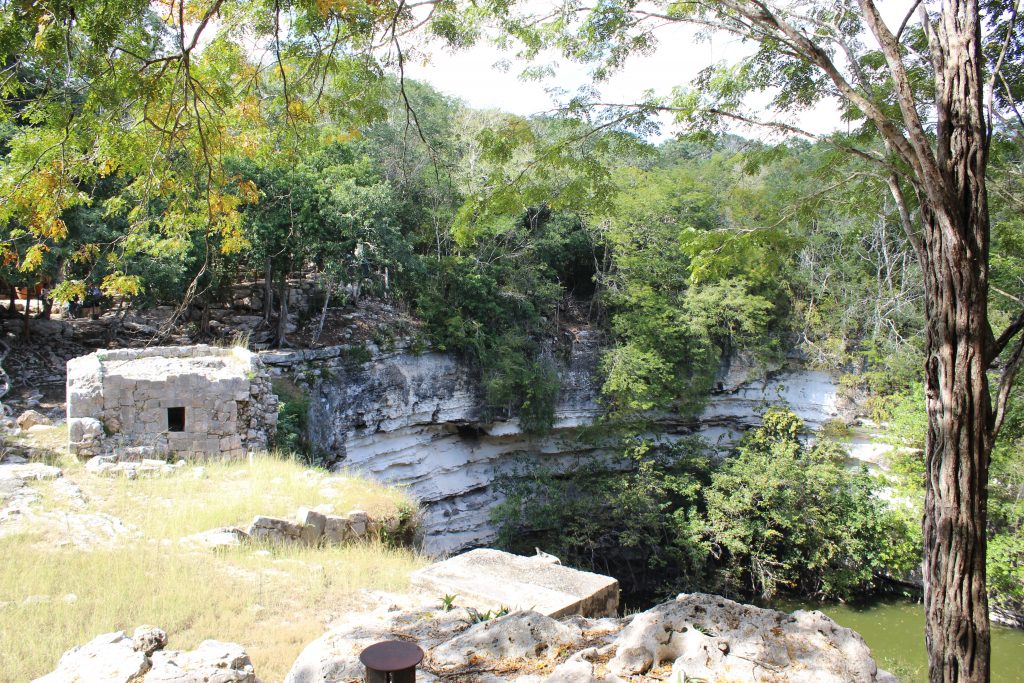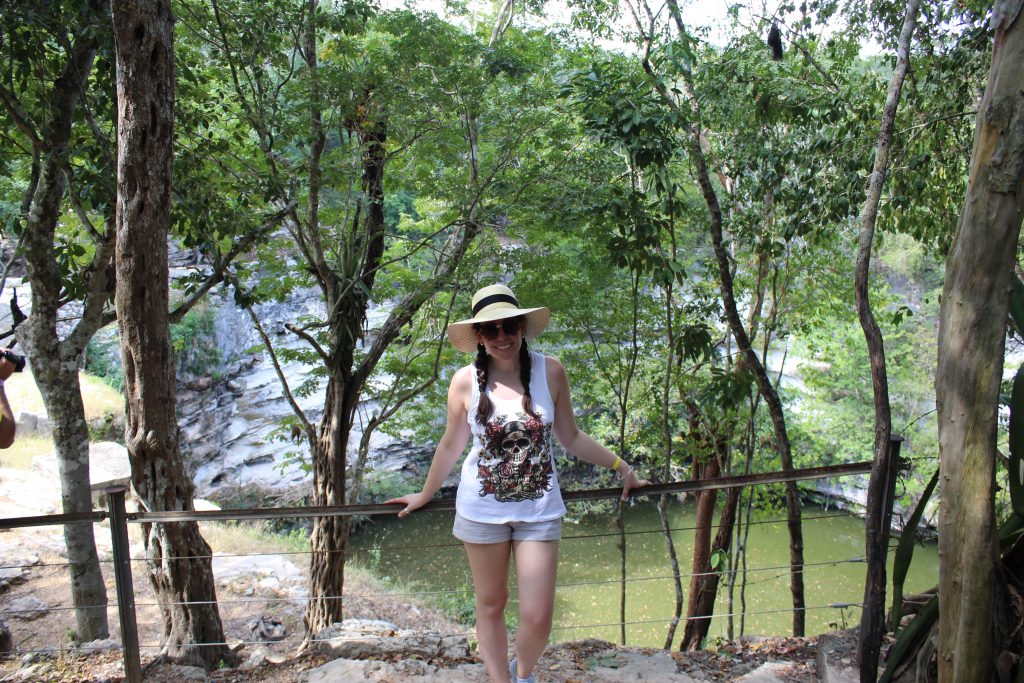Chichen Itza was one of the largest Maya cities. It was established before the period of Christopher Colombus and probably served as the religion center of Yucatan for a while.
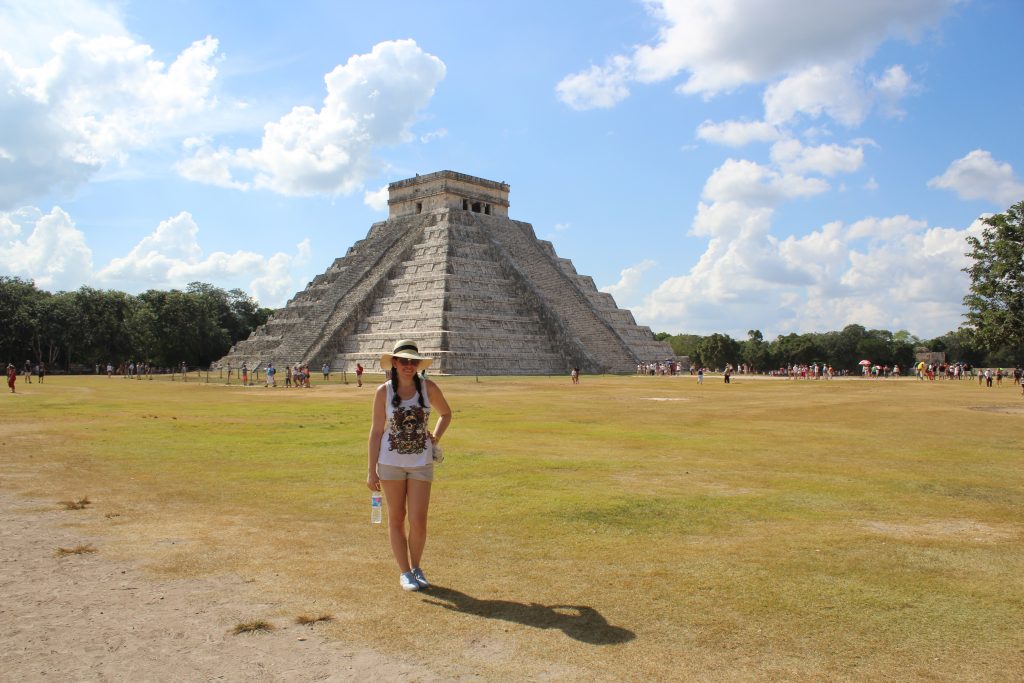
-El Castillo-
The “Kukulkan” Pyramid a square-based, stepped pyramid that is approximately 75 feet tall. The pyramid was built for astronomical purposes and during the vernal equinox (March 20) and the autumnal equinox (September 21) at about 3pm the sunlight bathes the western balustrade of the pyramid’s main stairway. This causes 7 isosceles triangles to form imitating the body of a serpent roughly 37 yards long that creeps downwards until it joins the huge serpent’s head carved in stone at the bottom of the stairway.
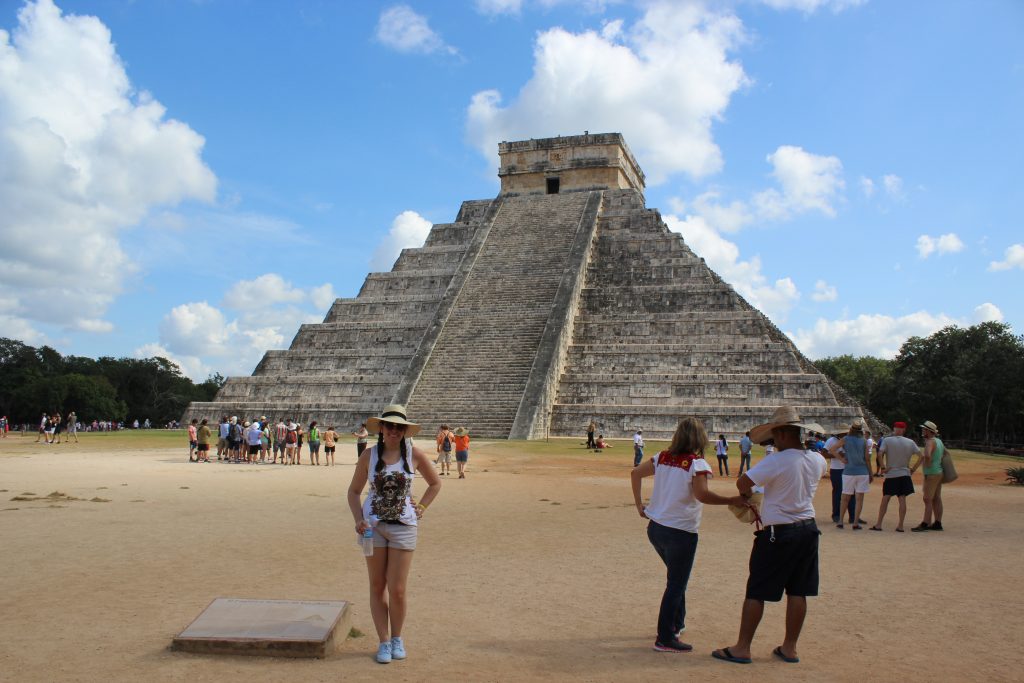

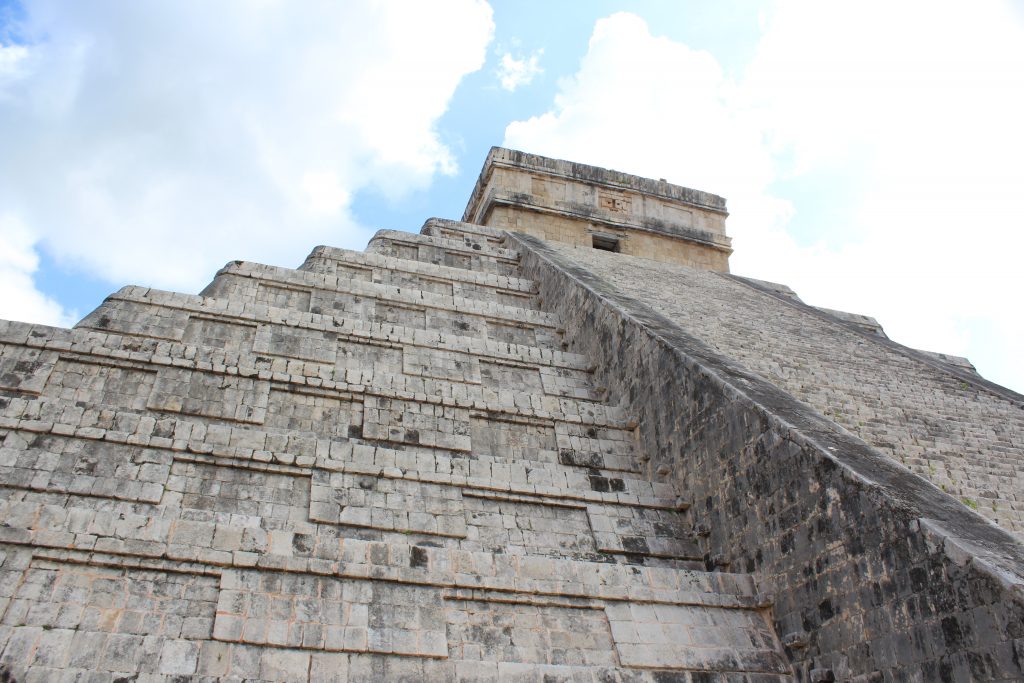
-Plataforma de Venus-
Venus Platform there is a relief of Serpent Bird Man, which is considered to be the Quetzalcoatl-Kukulkan’s representation as the ‘Morning Star’. Towards the stairway, one can observe the matting, which symbolizes power, and in the corners can be seen what has been interpreted as the Knotting of the Years alongside the Venus planet. The platform was originally painted in ochre, blue, red, green, and black. The function of these buildings was probably as podiums for rites, ceremonies or dances.
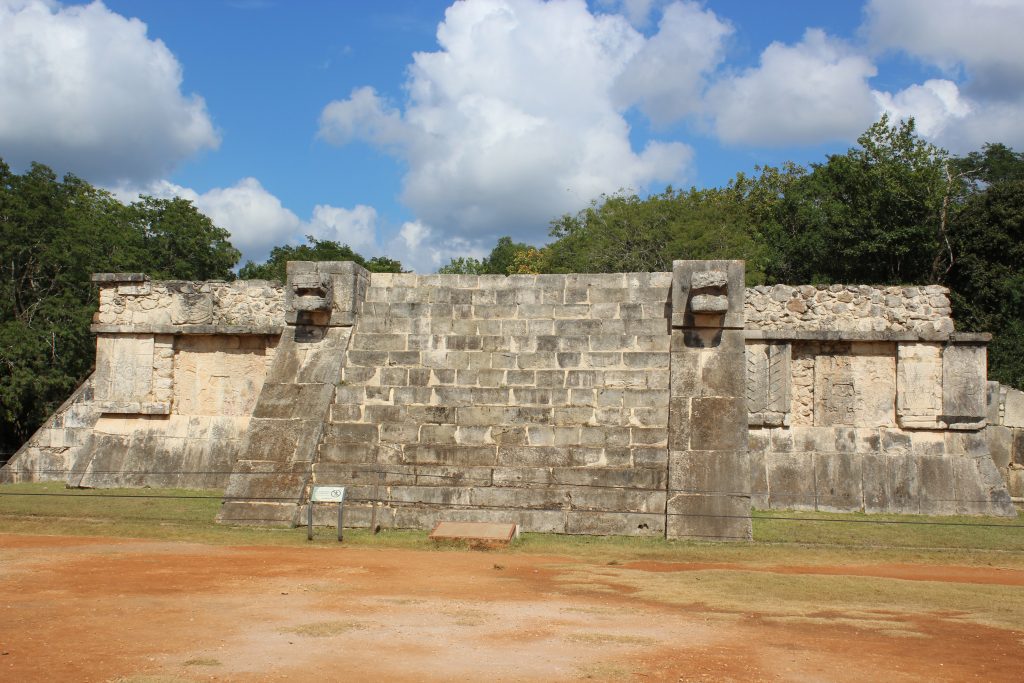
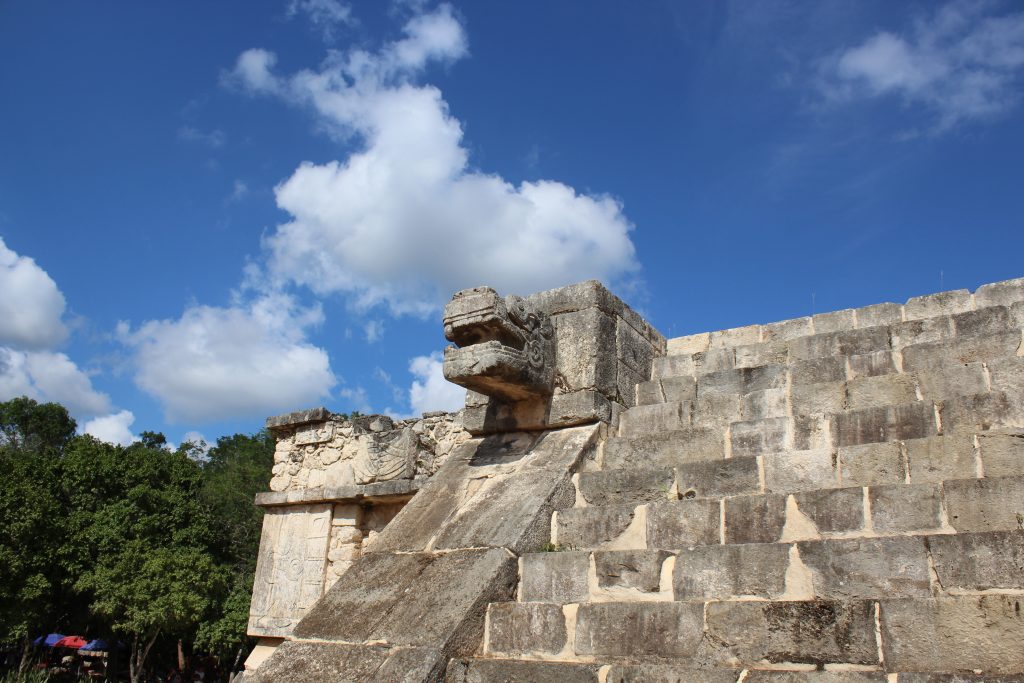
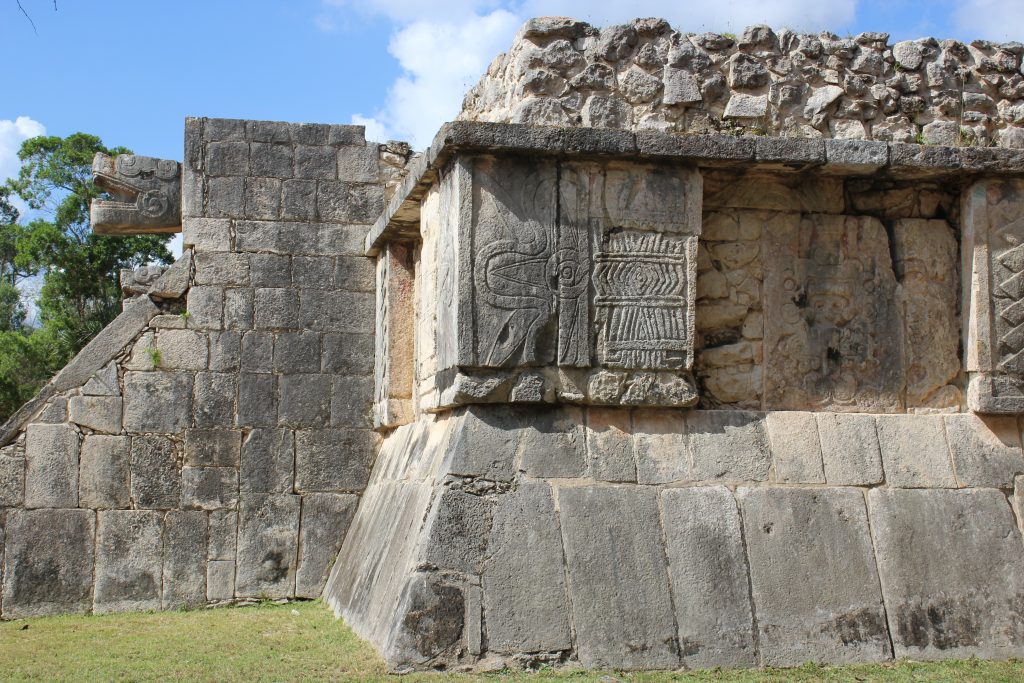
-Templo de las Grandes Mesas-
Temple of the Large Tables is a small pyramid formed by four tiered plinth with a building on top where there are some rectangular altar supported by small “atlases”. There are representations of warrior on the door jambs as well as on the temple pillars. On the upper part of the outside walls there are friezes with plumed serpents and jaguars.
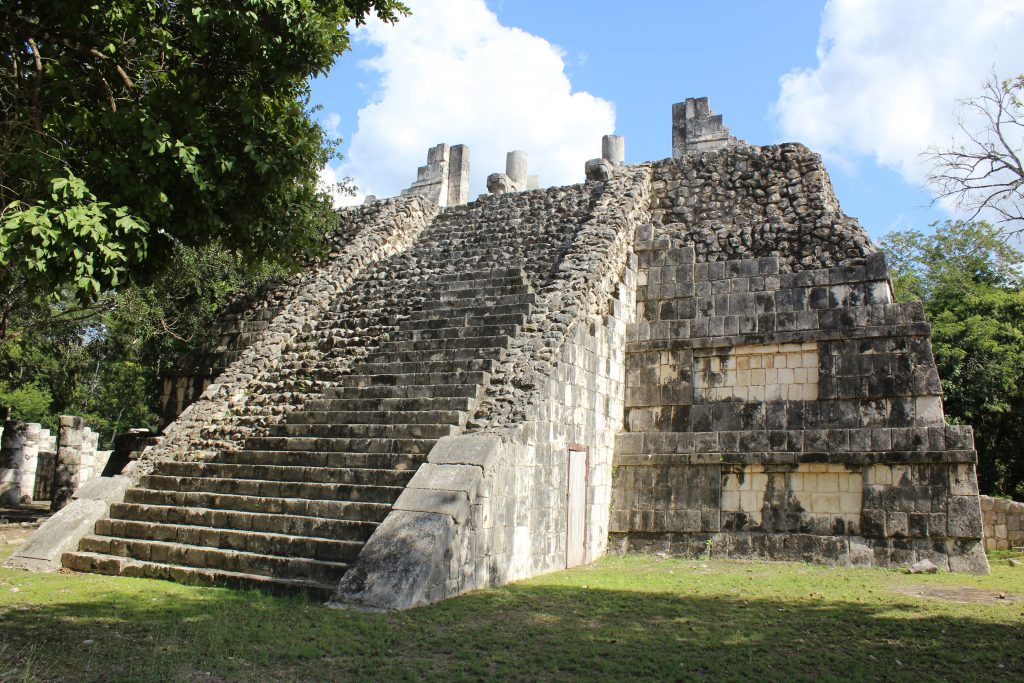
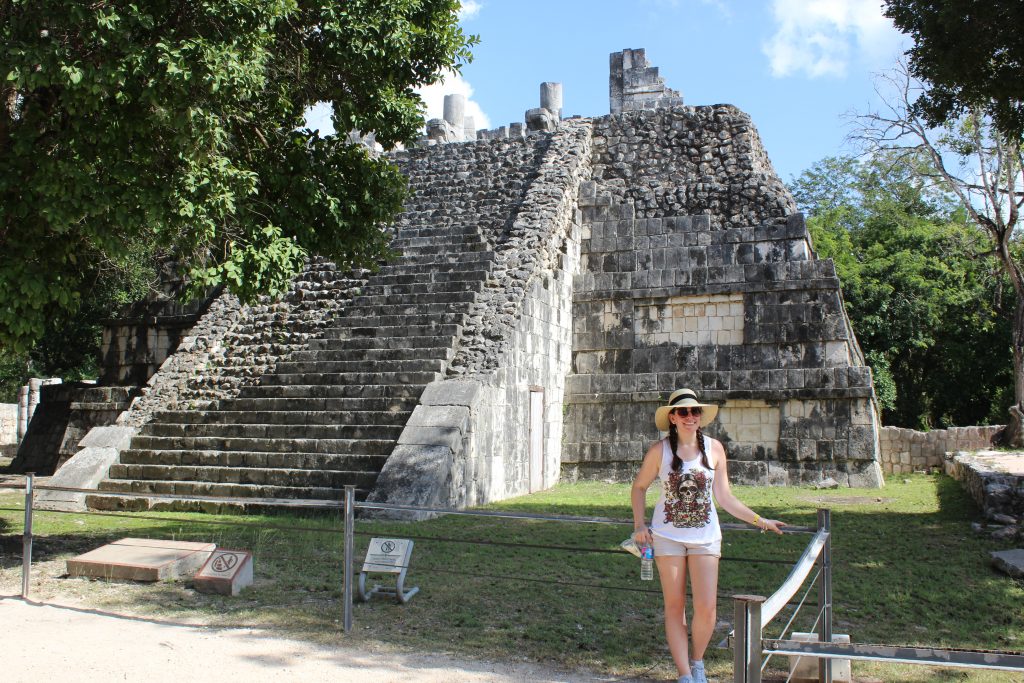
-Templo de los Guerreros-
The Temple of the Warriors The temple consists of four platforms, flanked on the south and west sides by 200 round and square columns.
All square columns are carved in low relief, with Toltec warriors; in some places they are cemented together in sections, painted in brilliant colors and covered with plaster.
The Temple of Warriors is approached by a broad stairway with a plain, stepped ramp on either side, and each ramp has figures of standard-bearers to hold flags. Before the main entrance a chacmool reclined.
On the top, serpent columns which had S shaped supported wooden lintels (now gone) above the doorways. Astronomical signs and decorative features on the head of each serpent are carved over the eyes.
On the top of each serpent head is a shallow basin that could have been used as an oil lamp.

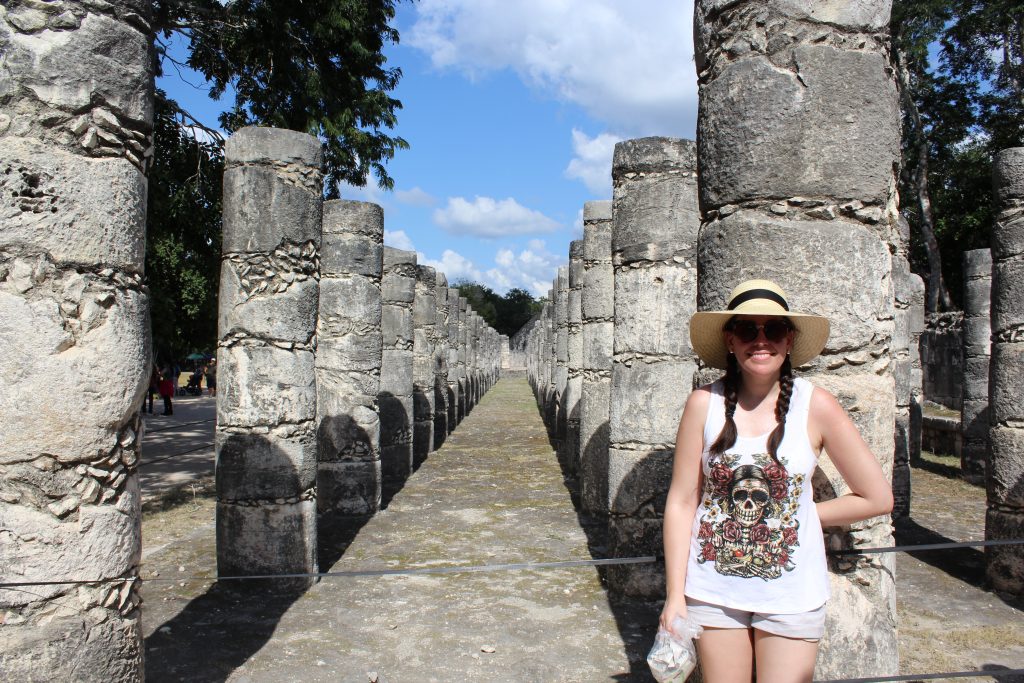
-Juego de Pelota-
The Mayans were great sportsmen and build huge ballcourts to play all their games. The Great Ballcourt of Chichen Itza is 225 feet wide and 545 feet long overall. It has no vault, no discontinuity between the walls and is totally open to the blue sky.
Each end has a raised to the temple area. A whisper from end can be heard clearly enough at the other end 500 feet far away and through the length and breath of the court.
The sound waves are unaffected by wind direction or time of day and also night. Archaeologists engaged in the reconstruction noted that the sound transmission became more and more strong and clear as they proceeded.
In 1931 Leopold Stokowski spent 4 days at this site to determine the acoustic principals that could be applied to theater for an open-air concert he was designing. Stokowski failed to learn the secret.
Today it has not been explained.
It is easy to imagine a Mayan King sitting here presiding over the games. Legends say that the winning Capitan would present his own head to the losing Capitan, who then decapitates him. While this may seem very strange reward, the Mayans believed that this to be the ultimate honor.
The winning Capitan getting a direct ticket for heaven instead of going through the 13 high steps that the Mayan’s believed they had to go through in order to reach peaceful heaven.
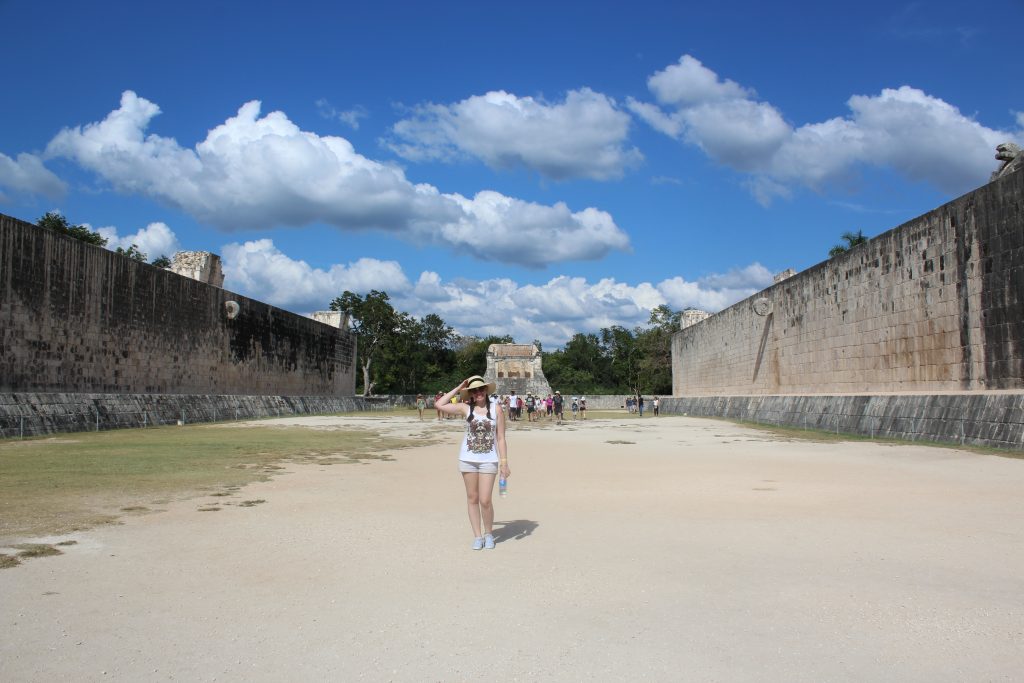
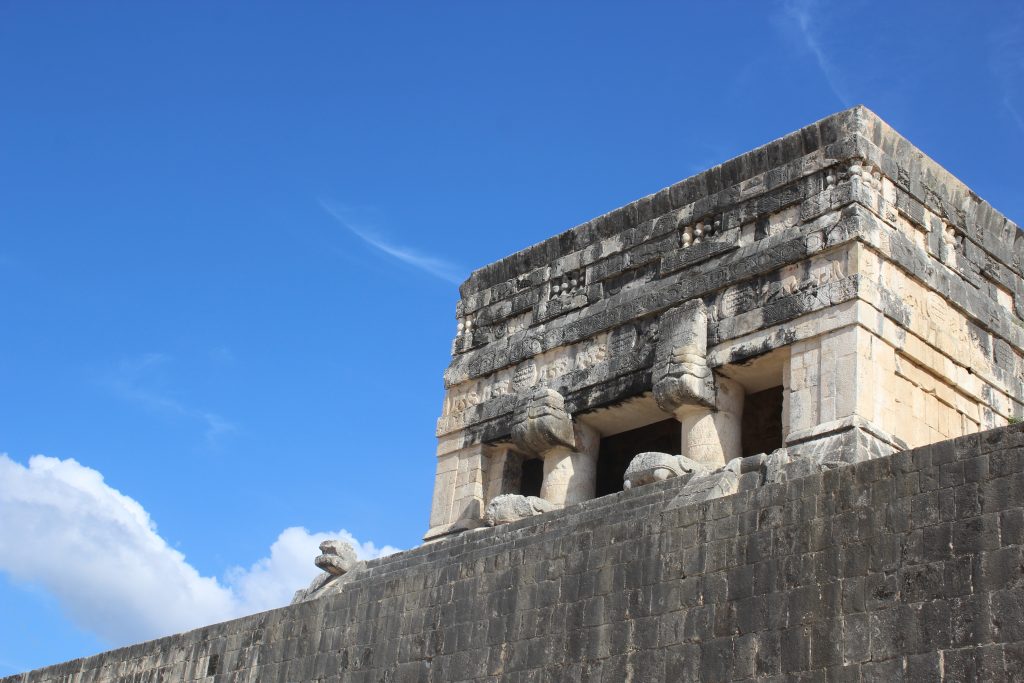
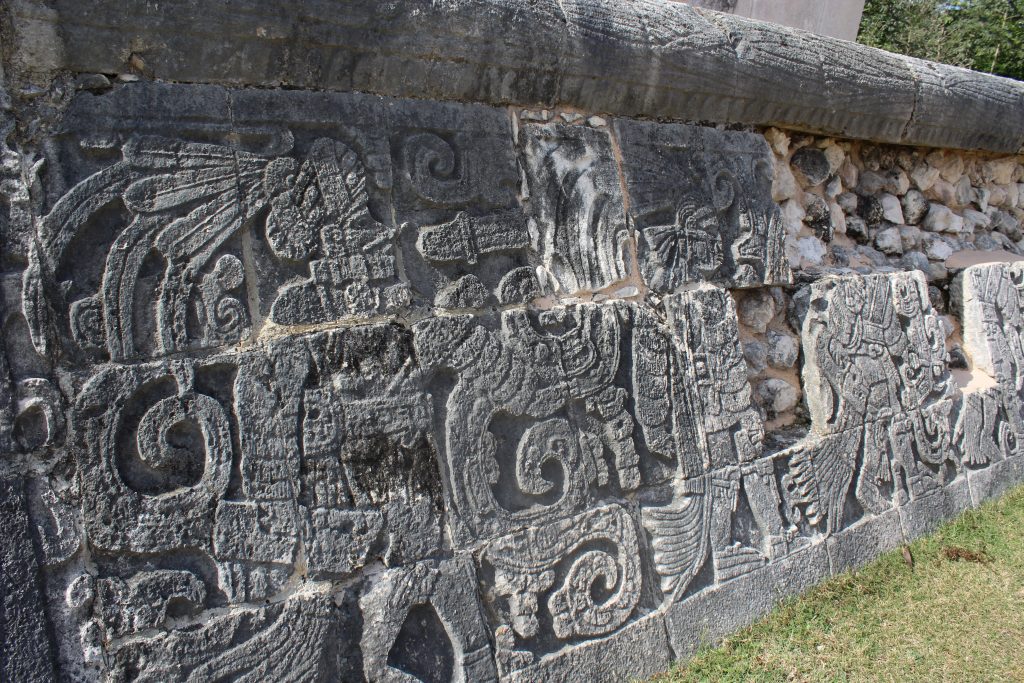
-Tzompantli-
Tzompantli is called The Wall of Skulls, which is actually an Aztec name for this kind of structure, because the first one seen by the horrified Spanish was at the Aztec capital city of Tenochtitlan.
The Tzompantli structure at Chichen Itza is very interesting Toltec structure, where the heads of sacrificial victims were placed; although it was one of three platforms in the Great Plaza, it was according to Bishop Landa, the only one for this purpose the others were for farces and comedies, showing the Itza’s were all about fun.
The platform walls of the Tzompantli have carved beautiful reliefs of four different subjects. The primary subject is the skull rack itself; others show a scene with a human sacrifice; eagles eating all human hearts; and skeletonized warriors with arrows and shields.
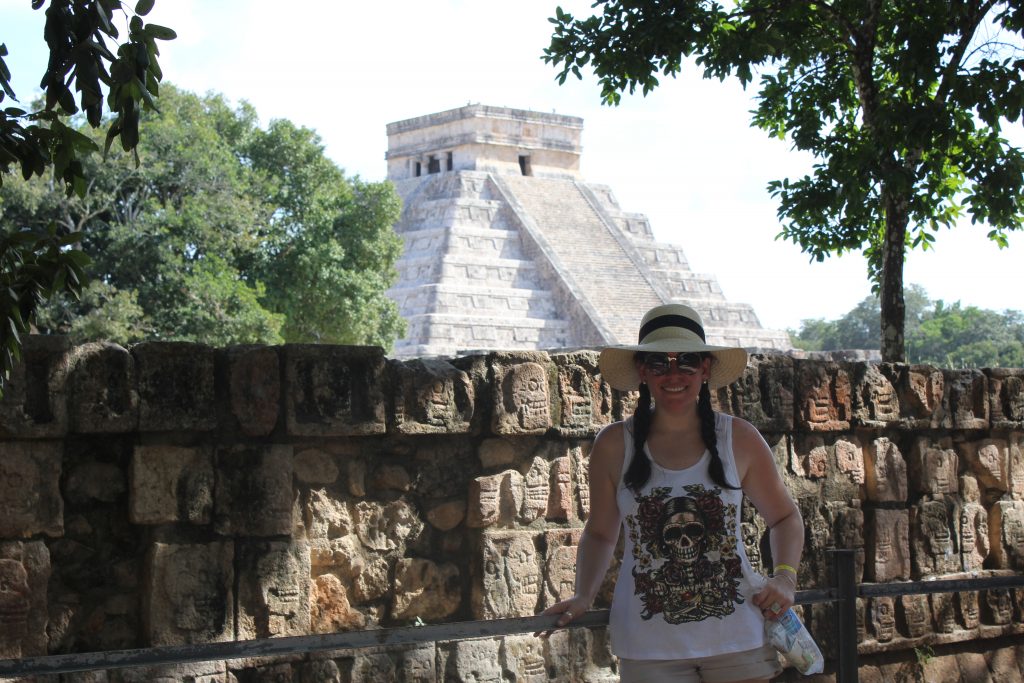
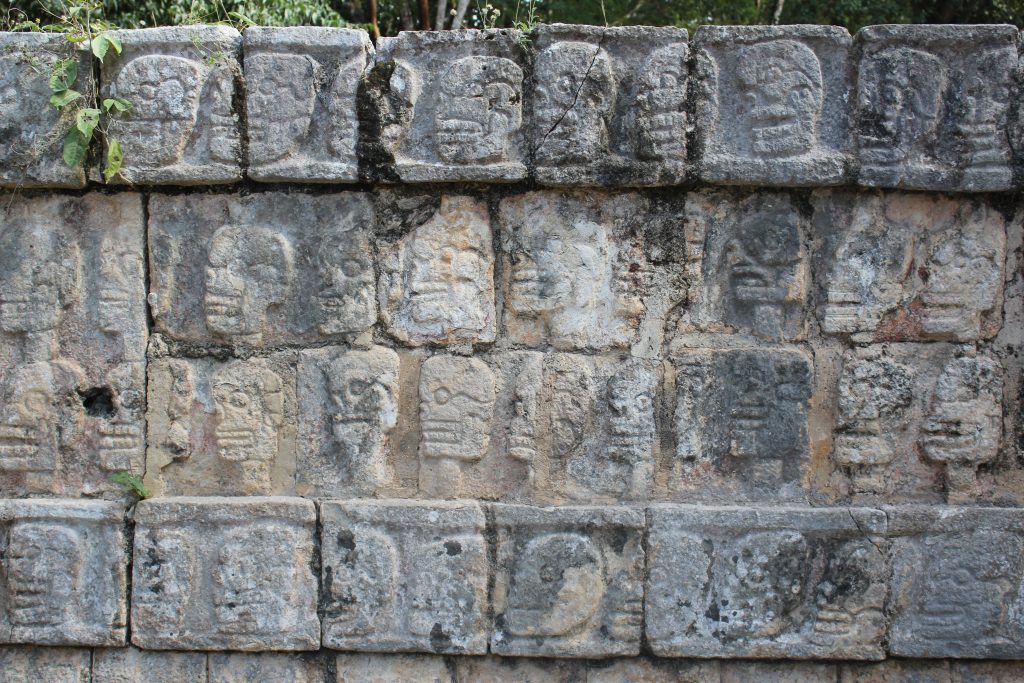
-Cenote Sagrado-
The Cenote Sagrado ( Sacred Cenote ) was a place of pilgrimage for ancient Maya people. Archaeological investigations support this as thousands of objects have been removed from the bottom of the Sacred Cenote, including material such as shell, gold, jade, wood, obsidian, cloth, as well as skeletons of men and children.
The Yucatan Peninsula is a limestone plain, with no streams or rivers. The region is pockmarked with natural sinkholes ( Cenotes ) which expose the water table to the surface.
One of the most impressive is the Sacred Cenote, which is 60 m. in diameter, and shear cliffs that drop to the water table some 27 m. below.
The legendary Sacred Cenote (natural waterhole) of Chichen ltza was special to the people for its social and religious significance.
